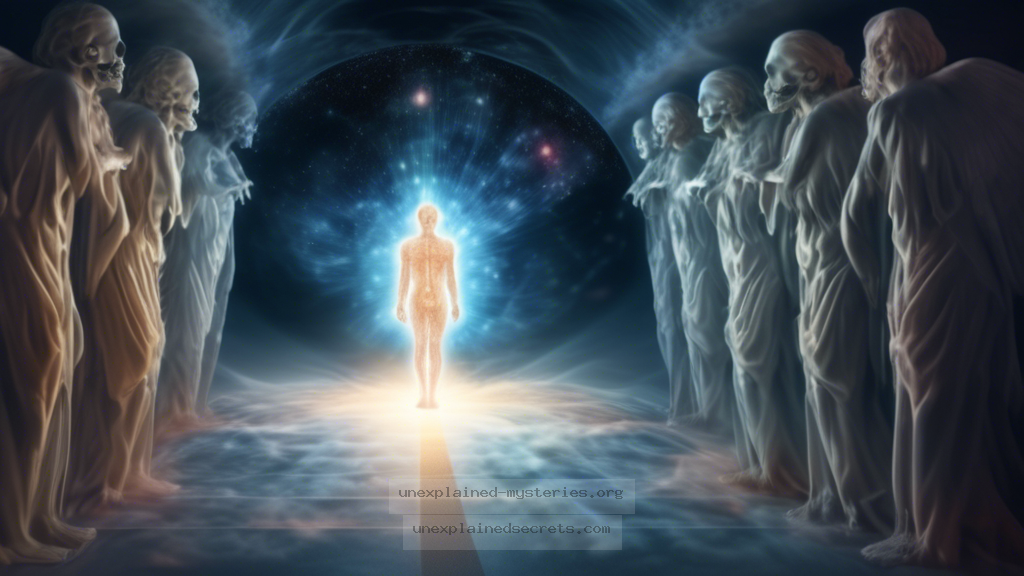What Do Consistent Near-Death Experience Reports Reveal About Consciousness After Clinical Death?
What Do Consistent Near-Death Experience Reports Reveal About Consciousness After Clinical Death?
Near-Death Experiences (NDEs) have long captivated the imagination of the public and the scientific community alike. These enigmatic episodes often involve individuals who have experienced clinical death and subsequently report vivid encounters beyond the physical realm. The consistent elements found in these experiences raise profound questions about the nature of consciousness and whether it persists beyond death. This inquiry is not merely academic; it touches on our deepest fears, hopes, and beliefs about life and what lies beyond. In this blog post, we will explore the fascinating realm of NDEs, examining their historical context, core concepts, and implications for our understanding of consciousness.
Historical Context of Near-Death Experiences
The phenomenon of NDEs is not a modern invention. Historical accounts of such experiences can be traced back to ancient times. For instance, the Tibetan Book of the Dead, dating back to the 8th century, describes a journey of the soul after death, resembling many contemporary NDE reports. Similarly, in ancient Greece, philosophers like Plato discussed the immortality of the soul and experiences that could be likened to NDEs.
Fast forward to the 20th century, and the systematic study of NDEs began in earnest. In 1975, cardiologist Dr. Raymond Moody published Life After Life, which compiled various NDE accounts and introduced the term “near-death experience” into popular consciousness. His work sparked both interest and skepticism, leading to a myriad of research studies exploring the phenomenon. The consistency of NDE reports across cultures and time periods suggests that these experiences may reveal something fundamental about human consciousness.
Core Concepts of Near-Death Experiences
NDEs typically encompass several core elements, with many individuals reporting similar features regardless of their cultural background. Common aspects include:
- A sensation of detachment from the body
- Experiencing a tunnel or bright light
- Encounters with deceased loved ones or spiritual beings
- A review of one’s life
- A feeling of peace and unconditional love
These elements invite a deeper analysis of what they might mean for our understanding of consciousness. Are these experiences mere brain functions in times of crisis, or do they indicate a form of consciousness that exists independently of the physical body?
Practical Implications and Evidence
Scientific investigations into NDEs have yielded a wealth of anecdotal evidence, but empirical research remains challenging due to the subjective nature of these experiences. However, notable studies have attempted to quantify and analyze NDEs. For example, a study published in The Lancet in 2001 involving 344 cardiac arrest survivors revealed that approximately 18% reported NDEs. Many of these individuals described similar features, lending credence to the notion that these experiences are more than mere hallucinations.
Furthermore, some researchers have begun to explore the physiological aspects of NDEs. For instance, the release of endorphins and other neurochemicals during trauma may contribute to feelings of euphoria and detachment. However, while these biological factors may explain some sensations, they do not account for the profound spiritual insights reported by many who have undergone NDEs.
| Study | Participants | Reported NDEs (%) |
|---|---|---|
| The Lancet Study (2001) | 344 cardiac arrest survivors | 18% |
| Greyson Scale Study (1983) | 102 NDE experiencers | 75% |
| American Heart Association (2006) | 1,500 cardiac patients | 20% |
Alternative Perspectives on NDEs
While many view NDEs as evidence of an afterlife or a separate consciousness, skeptics argue that these experiences can be explained through psychological and neurological frameworks. For instance, Dr. Sam Parnia, a critical care physician, suggests that the brain may continue to function for a short time after clinical death, leading to vivid hallucinations. This perspective posits that NDEs are simply the brain’s last activities, shaped by individual beliefs and experiences.
Moreover, cultural factors play a crucial role in shaping NDE narratives. For example, individuals from different religious backgrounds may interpret their experiences through the lens of their faith. This raises important questions about the subjective nature of NDEs and whether they can be universally understood or accepted.
Common Misconceptions About NDEs
Despite growing interest in NDEs, several misconceptions persist. One common myth is that NDEs are exclusively associated with death; however, many individuals report NDE-like experiences during traumatic events, such as severe injuries or accidents, even when they do not face imminent death.
Another misconception is that all NDEs are positive or enlightening. While many individuals describe feelings of peace and love, some report distressing or negative experiences. These may include feelings of fear or isolation, which challenge the notion that NDEs are inherently positive.
- Myth: NDEs only occur when someone is clinically dead.
- Fact: NDEs can occur during moments of extreme trauma or near-death situations.
- Myth: All NDEs are uniformly positive.
- Fact: Some individuals report negative or confusing experiences during NDEs.
Best Practices for Investigation and Study
For those interested in studying NDEs, approaching the subject with an open mind and a balanced perspective is crucial. Here are some best practices for investigation:
- Document Experiences: Encourage individuals to share their experiences in detail, noting emotional and sensory aspects.
- Seek Diverse Perspectives: Engage with various cultural and religious viewpoints to understand different interpretations of NDEs.
- Collaborate with Experts: Work with professionals in psychology, neuroscience, and theology to build a comprehensive understanding of NDEs.
- Remain Skeptical but Open: While skepticism is essential for scientific inquiry, remain open to the possibility that NDEs may reveal deeper truths about human consciousness.
Future Developments and Ongoing Research
The study of NDEs is an evolving field, with advancements in technology and neuroscience paving the way for new discoveries. Researchers are exploring brain activity during near-death situations using neuroimaging techniques, which could shed light on the physiological and psychological mechanisms behind NDEs.
Furthermore, there is increasing interest in the implications of NDEs for understanding consciousness itself. What do these experiences tell us about the separation between mind and body? As science continues to advance, we may find ourselves closer to answering these profound questions. Exciting interdisciplinary collaborations are emerging, combining insights from psychology, philosophy, and spirituality to deepen our understanding of consciousness and its potential transcendence beyond physical existence.
Conclusion
The consistent reports of Near-Death Experiences challenge our understanding of consciousness and its relationship to the physical body. While scientific explanations offer valuable insights, the spiritual dimensions of NDEs provoke deeper questions about life, death, and what may lie beyond. As research progresses, we may uncover new truths that bridge the gap between science and spirituality, ultimately reshaping our beliefs about consciousness and the afterlife. The quest for understanding NDEs is not just a pursuit of knowledge; it is a journey that touches the very essence of what it means to be human.
Other Articles
Recent Posts
- What Happened to Flight MH370? The Conspiracy Theories That Still Haunt Us
- What Secrets Lurk Within the Walls of the Infamous Trans-Allegheny Lunatic Asylum?
- What Evidence Supports the Existence of Bigfoot in the Pacific Northwest?
- What Happened to the Indus Valley Civilization? Unraveling the Mysteries of Ancient Urban Life
- Can Telepathy Be Scientifically Proven Through Laboratory Evidence?







